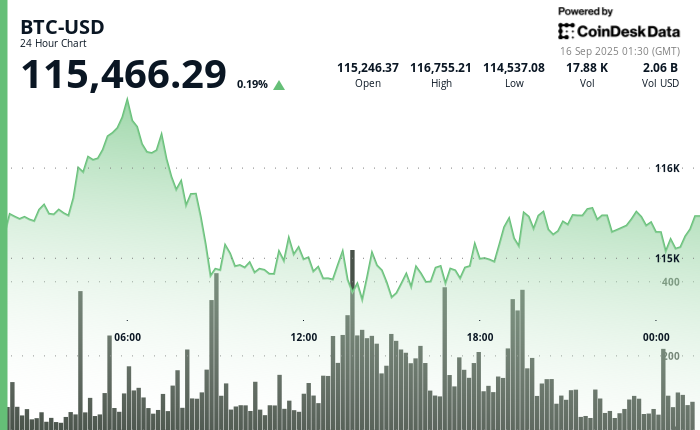Uncategorized
Why Bittensor Is AI’s Best Next-Gen Incubator

After nearly ten years in crypto, I’ve watched hundreds of projects promise to revolutionize everything from banking to art. Yet these revolutions have largely failed to materialize.
The issue isn’t technology. It’s that we’ve been building solutions looking for problems, rather than focusing on solving real challenges and delivering real value.
Most projects create tokens first, utility later. This speculation cycle has consumed the industry, measuring success by token price, not actual value creation. We’re missing the crucial ingredient: a mechanism that rewards building useful things rather than building over-hyped useless things.
What if there was a protocol that flipped this model and projects had to create value first, then get rewarded? That’s Bittensor.
Bittensor: Rewarding Performance Over Mindshare
In some ways Bittensor is like the Y Combinator of AI. Whereas Y Combinator gives startups money and mentorship in exchange for equity, Bittensor gives builders incentives through token emissions, measures performance through free market dynamics, and rewards winners without human gatekeepers.
Think of it as an economic game where independent teams compete to build valuable AI services. Every 12 seconds, the network distributes rewards based purely on usefulness. No marketing budgets. No insiders. No traditional fundraising. No KOLs. Just performance.
The tokenomics are elegant yet powerful. Like Bitcoin, Bittensor’s native TAO has a fixed supply cap of 21 million, with 7,200 tokens distributed daily and supply halving every four years. This creates genuine scarcity in the form of rewards that must be earned through performance rather than speculation.
Here’s where it gets even more interesting: each subnet has its own «alpha» token that subnet participants earn. TAO holders can stake into subnets they believe in, receiving that subnet’s alpha tokens in return. Higher-performing subnets attract more TAO stake and get a larger share of daily emissions. This market-driven funding mechanism means that builders get paid only if their service actually works and successful projects automatically get more resources, while also rewarding those who staked.
These performance-based rewards mean that anyone can build but the market decides the winner. And, since its open-source software, if a project isn’t delivering, others create a better version.
This makes Bittensor a transparent competition where all metrics are public. It’s been called «capitalistic Darwinism.» In other words, create value or get out-competed.
Why Bittensor Changes Everything
Big Tech’s grip on AI is only getting stronger. Bittensor represents our best chance at wresting control and anchoring innovation in an open, transparent, and democratic environment where value accrues to the most performant innovations, rather than closed systems that benefit from outsized network effects.
For the public, Bittensor represents crypto’s original promise: coordinating human effort toward valuable outcomes without intermediaries, committees, or gatekeepers. Value gets created first through competition, then tokens reward the creators; the opposite of hoping speculation drives value.
For builders, this means skipping VC pitches, preserving equity, and getting rewarded immediately for building useful things. The most important infrastructure is being built by teams spending «$0 on marketing, $0 on exchange listings» with pure focus on value creation. Community governance ensures builders aren’t locked out from decision-making.
For users, this creates access to quality-competing services rather than marketing-budget winners. Users benefit from the upside by supporting the best projects, while community governance creates strong bonds between creators and consumers.
For investors, Bittensor offers AI exposure without having to pick individual winners. The staking mechanics drive value accrual into the network rather than siphoning it away. Investors earn upside by supporting top-performing projects while community governance gives them a voice rather than forcing them to follow a CEO’s agenda.
The timing couldn’t be better. With over $55 billion in funding going to the AI sector in Q1 2025, $1.39 billion in funding going to AI agents in the past quarter, crypto funding validates what Bittensor has already built. While others are still fundraising, world-class AI teams are already building serverless compute (SN64) and decentralized training (SN3), as well as climate prediction markets (SN18) and algorithmic trading systems (my project, SN8).
Bittensor is a new paradigm for AI innovation because it’s a proving-ground that allows the best innovations to win without artificial barriers, tilted economics, or incumbent advantages. And, as massively funded companies continue to dominate AI, it’s imperative that we nurture independent, open ecosystems that reward innovation and grit, clean and clear.
Uncategorized
Asia Morning Briefing: Fragility or Back on Track? BTC Holds the Line at $115K

Good Morning, Asia. Here’s what’s making news in the markets:
Welcome to Asia Morning Briefing, a daily summary of top stories during U.S. hours and an overview of market moves and analysis. For a detailed overview of U.S. markets, see CoinDesk’s Crypto Daybook Americas.
Bitcoin (BTC) traded just above $115k in Asia Tuesday morning, slipping slightly after a strong start to the week.
The modest pullback followed a run of inflows into U.S. spot ETFs and lingering optimism that the Federal Reserve will cut rates next week. The moves left traders divided: is this recovery built on fragile foundations, or is crypto firmly back on track after last week’s CPI-driven jitters?
That debate is playing out across research desks. Glassnode’s weekly pulse emphasizes fragility. While ETF inflows surged nearly 200% last week and futures open interest jumped, the underlying spot market looks weak.
Buying conviction remains shallow, Glassnode writes, funding rates have softened, and profit-taking is on the rise with more than 92% of supply in profit.
Options traders have also scaled back downside hedges, pushing volatility spreads lower, which Glassnode warns leaves the market exposed if risk returns. The core message: ETFs and futures are supporting the rally, but without stronger spot flows, BTC remains vulnerable.
QCP takes the other side.
The Singapore-based desk says crypto is “back on track” after CPI confirmed tariff-led inflation without major surprises. They highlight five consecutive days of sizeable BTC ETF inflows, ETH’s biggest inflow in two weeks, and strength in XRP and SOL even after ETF delays.
Traders, they argue, are interpreting regulatory postponements as inevitability rather than rejection. With the Altcoin Season Index at a 90-day high, QCP sees BTC consolidation above $115k as the launchpad for rotation into higher-beta assets.
The divide underscores how Bitcoin’s current range near $115k–$116k is a battleground. Glassnode calls it fragile optimism; QCP calls it momentum. Which side is right may depend on whether ETF inflows keep offsetting profit-taking in the weeks ahead.

Market Movement
BTC: Bitcoin is consolidating near the $115,000 level as traders square positions ahead of expected U.S. Fed policy moves; institutional demand via spot Bitcoin ETFs is supporting upside
ETH: ETH is trading near $4500 in a key resistance band; gains are being helped by renewed institutional demand, tightening supply (exchange outflows), and positive technical setups.
Gold: Gold continues to hold near record highs, underpinned by expectations of Fed interest rate cuts, inflation risk, and investor demand for safe havens; gains tempered somewhat by profit‑taking and a firmer U.S. dollar
Nikkei 225: Japan’s Nikkei 225 topped 45,000 for the first time Monday, leading Asia-Pacific gains as upbeat U.S.-China trade talks and a TikTok divestment framework lifted sentiment.
S&P 500: The S&P 500 rose 0.5% to close above 6,600 for the first time on Monday as upbeat U.S.-China trade talks and anticipation of a Fed meeting lifted stocks.
Elsewhere in Crypto
Uncategorized
Wall Street Bank Citigroup Sees Ether Falling to $4,300 by Year-End

Wall Street giant Citigroup (C) has launched new ether (ETH) forecasts, calling for $4,300 by year-end, which would be a decline from the current $4,515.
That’s the base case though. The bank’s full assessment is wide enough to drive an army regiment through, with the bull case being $6,400 and the bear case $2,200.
The bank analysts said network activity remains the key driver of ether’s value, but much of the recent growth has been on layer-2s, where value “pass-through” to Ethereum’s base layer is unclear.
Citi assumes just 30% of layer-2 activity contributes to ether’s valuation, putting current prices above its activity-based model, likely due to strong inflows and excitement around tokenization and stablecoins.
A layer 1 network is the base layer, or the underlying infrastructure of a blockchain. Layer 2 refers to a set of off-chain systems or separate blockchains built on top of layer 1s.
Exchange-traded fund (ETF) flows, though smaller than bitcoin’s (BTC), have a bigger price impact per dollar, but Citi expects them to remain limited given ether’s smaller market cap and lower visibility with new investors.
Macro factors are seen adding only modest support. With equities already near the bank’s S&P 500 6,600 target, the analysts do not expect major upside from risk assets.
Read more: Ether Bigger Beneficiary of Digital Asset Treasuries Than Bitcoin or Solana: StanChart
Uncategorized
XLM Sees Heavy Volatility as Institutional Selling Weighs on Price

Stellar’s XLM token endured sharp swings over the past 24 hours, tumbling 3% as institutional selling pressure dominated order books. The asset declined from $0.39 to $0.38 between September 14 at 15:00 and September 15 at 14:00, with trading volumes peaking at 101.32 million—nearly triple its 24-hour average. The heaviest liquidation struck during the morning hours of September 15, when XLM collapsed from $0.395 to $0.376 within two hours, establishing $0.395 as firm resistance while tentative support formed near $0.375.
Despite the broader downtrend, intraday action highlighted moments of resilience. From 13:15 to 14:14 on September 15, XLM staged a brief recovery, jumping from $0.378 to a session high of $0.383 before closing the hour at $0.380. Trading volume surged above 10 million units during this window, with 3.45 million changing hands in a single minute as bulls attempted to push past resistance. While sellers capped momentum, the consolidation zone around $0.380–$0.381 now represents a potential support base.
Market dynamics suggest distribution patterns consistent with institutional profit-taking. The persistent supply overhead has reinforced resistance at $0.395, where repeated rally attempts have failed, while the emergence of support near $0.375 reflects opportunistic buying during liquidation waves. For traders, the $0.375–$0.395 band has become the key battleground that will define near-term direction.

Technical Indicators
- XLM retreated 3% from $0.39 to $0.38 during the previous 24-hours from 14 September 15:00 to 15 September 14:00.
- Trading volume peaked at 101.32 million during the 08:00 hour, nearly triple the 24-hour average of 24.47 million.
- Strong resistance established around $0.395 level during morning selloff.
- Key support emerged near $0.375 where buying interest materialized.
- Price range of $0.019 representing 5% volatility between peak and trough.
- Recovery attempts reached $0.383 by 13:00 before encountering selling pressure.
- Consolidation pattern formed around $0.380-$0.381 zone suggesting new support level.
Disclaimer: Parts of this article were generated with the assistance from AI tools and reviewed by our editorial team to ensure accuracy and adherence to our standards. For more information, see CoinDesk’s full AI Policy.
-

 Business11 месяцев ago
Business11 месяцев ago3 Ways to make your business presentation more relatable
-

 Fashion11 месяцев ago
Fashion11 месяцев agoAccording to Dior Couture, this taboo fashion accessory is back
-

 Entertainment11 месяцев ago
Entertainment11 месяцев ago10 Artists who retired from music and made a comeback
-

 Entertainment11 месяцев ago
Entertainment11 месяцев ago\’Better Call Saul\’ has been renewed for a fourth season
-

 Entertainment11 месяцев ago
Entertainment11 месяцев agoNew Season 8 Walking Dead trailer flashes forward in time
-

 Business11 месяцев ago
Business11 месяцев ago15 Habits that could be hurting your business relationships
-

 Entertainment11 месяцев ago
Entertainment11 месяцев agoMeet Superman\’s grandfather in new trailer for Krypton
-

 Entertainment11 месяцев ago
Entertainment11 месяцев agoDisney\’s live-action Aladdin finally finds its stars





